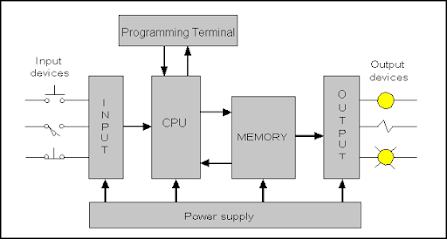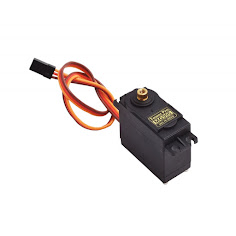Programmable Logic Controller-PLC-Types of PLC
The programmable logic controller or PLC is a special purpose computer. It has no display, no keyboard, no printer, no hard drive, And hides in the control panel out on the factory floor, but it is still a computer. Initially, the PLC was a replacement for panels of relays, devices that turn on and off. Making a machine run using relays as logic was time-consuming and challenging, and making a change in the logic or the operation of the machine was almost as complicated as starting over. Relays also fail far more frequently than computer components, So that relay logic required more downtime to keeps it running than newer PLC-based controls.
On top of all of that, relays use a lot of electricity, make lots of heat and soot, and take up lots of space. An installed PLC is deceptively simple in appearance. You have a CPU module and input/output devices, referred to as I/O. Sometimes the I/O is part of the CPU, and sometimes it is in other modules. The CPU communicates with the I/O, so in most systems they share a backplane that physically holds them in place and electronically connects them. In other equipment, the I/O modules can be miles away from the CPU and connected with data cables, so that the PLC is not limited to a single cabinet or even the same building. Since the PLC is a computer, there is no need to limit it to only digital inputs and outputs.
Over the years, the manufacturers added analog and other numerical inputs and outputs. To make these numerical devices useful, they included calculation capability in the programming as well, so that we can now calculate, for instance, statistical process control (SPC) values and put PID controllers directly into the PLC program. Since this is called a programmable logic controller, we need to program it. Most PLCs are programmed using an application running on a standard desktop or laptop PC. They communicate with the PLC using Ethernet or a proprietary communication bus, depending on the manufacturer. Most manufacturers seem to have settled on Ethernet and/or USB in recent years. Unfortunately, the PLC manufacturers have failed to agree on how we program the control logic. Although most of the manufacturers claim some form of “Ladder Logic,” the specifics of that language are different for each manufacturer, including different capabilities, different ways of doing the same thing, and even differences in the order in which the CPU processes the various pieces of logic.
Types of PLC
1. Modular PLC
In modular type PLC, the number of I/Os can be increased by the addition of modules to the existing PLC. The name Modular itself means that the number of modules can be connected to the device same in modular PLC several modules can be connected that is several components can be connected to a common rack or bus with extendable I/O capabilities. The Modular PLC also contains power supply modules, CPU and other I/O modules that are plugged in the same rack which may or may not be from same manufacturers.
2. Compact PLC
The compact PLC doesn’t have the capability to expand the modules as it has fixed number of I/O module and external I/O card.
3. Rack PLC
In rack type PLC all the components of the PLC areas separate module and are assembled to form one unit by mounting the individual components on a rack. This PLC can support up to thousands of I/Os.








Comments
Post a Comment